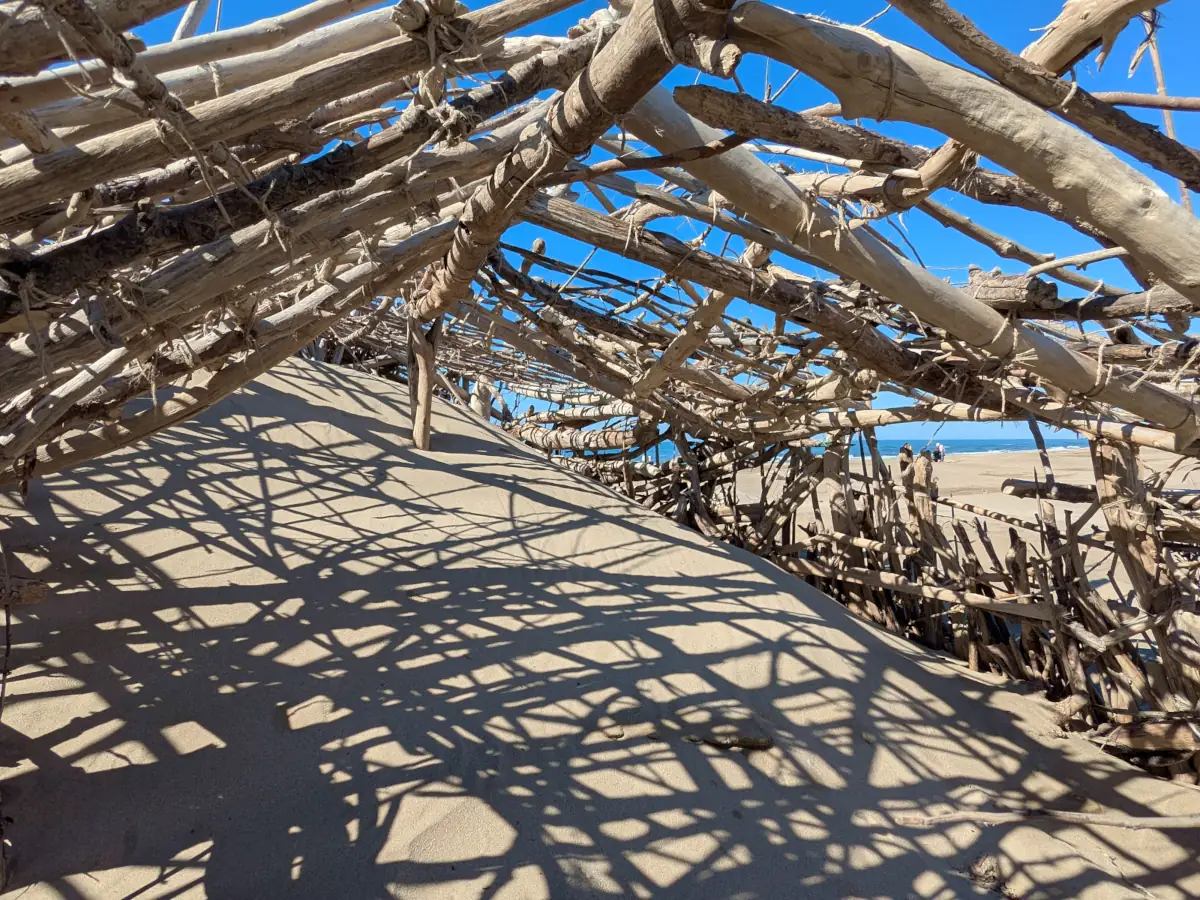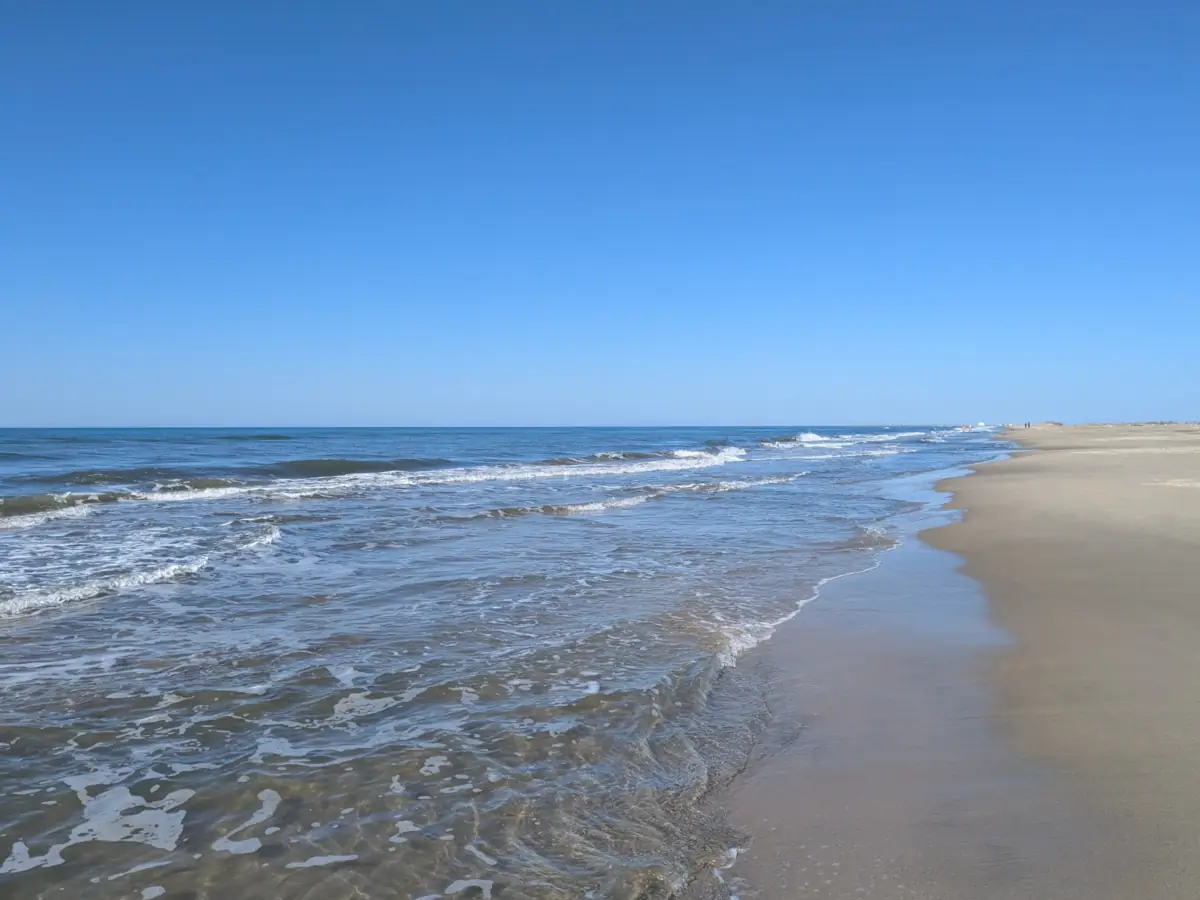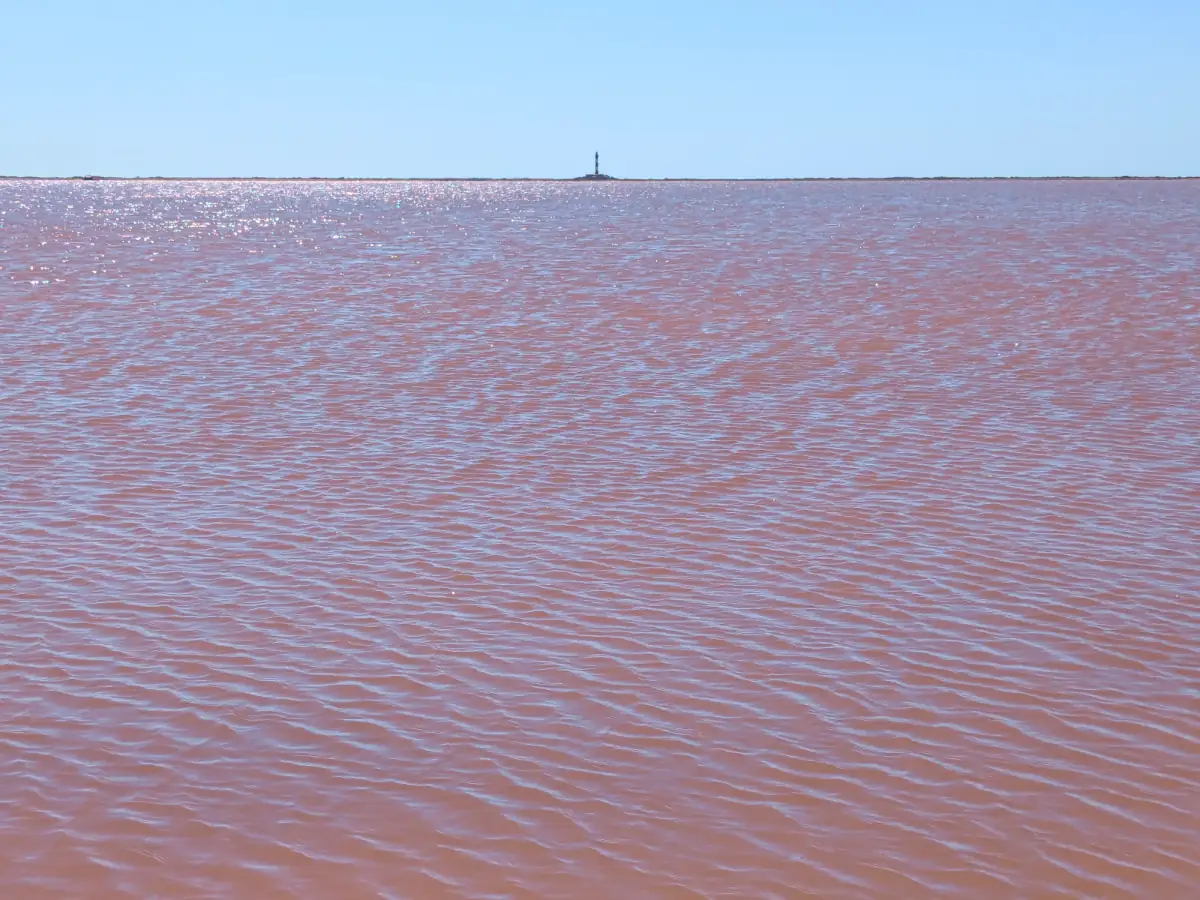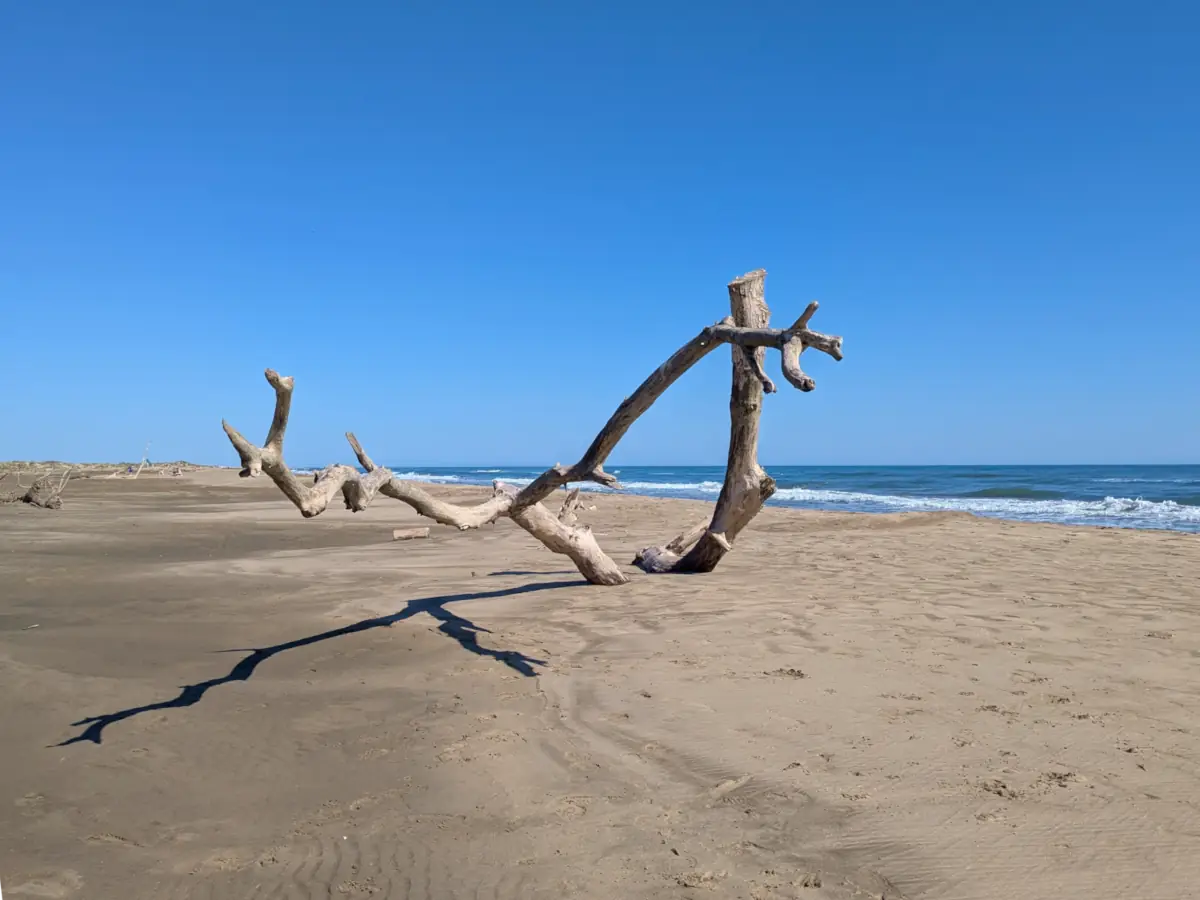A wild and untamed beach, a fragile balance between the Rhône and the Mediterranean.
Piémanson Beach is a long, slender ribbon of fine sand, separating the sea from the lagoons where flamingos and migratory birds thrive. Shaped by the constant clash between the land and the waters of the river and the sea, this narrow strip of dunes is a fragile place — a temporary truce between the earth and the waves.
At the Mouth of the Rhône
Stretching for 7 kilometers, its eastern end marks the mouth of the Rhône. There, the river pours into the sea, mingling its fresh waters with the salty expanse of the Mediterranean, feeding a rare biodiversity. The river carries mud and silt that settle where they meet the denser saltwater. Millions of years of this slow labor have shaped the vast delta of the Camargue.

A Wild Beach
Untouched by constructions or concessions, this beach attracts lovers of nature and silence. A few steps are enough to leave civilization behind and enter a world of sand and sea, bathed in light and shaped by the wind. Driftwood, polished by the tides, dots the shoreline — gifts from the Rhône to the sea.
A rich and unique ecosystem, characteristic of the Camargue, has established itself in this singular natural environment: flamingos, swans, migratory birds. The beach is popular with swimmers, naturists, and enthusiasts of activities such as kitesurfing and leisurely walks.

A Place of Freedom
The history of Piémanson is marked by its role as a haven of freedom. In the 19th century, the salt workers of Salin-de-Giraud would come here to unwind after a day of hard labor. In the 1970s, it became a legendary spot for wild camping, drawing thousands of visitors from across Europe every summer — caravans and tents scattered along the shore, as people came to savour a few days or weeks of unrestrained liberty.
This summer "ephemeral village" embodied conviviality and independence, complete with its rituals of apéritifs and pétanque. But the uncontrolled influx eventually weakened the ecosystem, prompting authorities to ban wild camping in 2016 in order to protect the site. Today, the beach remains accessible but regulated, with a designated parking area and set opening hours.
The Salt Marshes

Since Antiquity, humans have shaped the nearby lagoons to extract salt — the white gold of the Camargue. The village of Salin-de-Giraud was built in the late 19th century by two major companies, the Henry Merle Company and Solvay, to house the salt workers. Today, the Compagnie des Salins du Midi still manages these salt fields, which cover approximately 11,000 hectares. Most of the harvested salt is used for road de-icing, as well as for industrial and food applications.
Getting to Piémanson
From Arles, it’s a 45-minute drive via the D36, a road that cuts through the Camargue plain to Salin-de-Giraud. A few kilometers further on, skirting the salt marshes and crossing lagoons frequented by flamingos, you’ll reach a large free car park with 1,200 spaces, just steps from the beach. Coming from Marseille, the Barcarin ferry, linking Salin-de-Giraud to Port-Saint-Louis-du-Rhône, avoids a long detour; it’s free for bicycles, riders, and two-wheelers.

Find a guesthouse in the Camargue
With its singular landscapes and unspoiled environment, Piémanson offers a revitalizing escape into the heart of nature.



